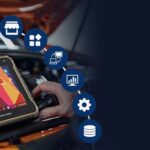Integrating a tablet into an older car with OBD2 opens up a world of possibilities, especially when it comes to enhancing your car’s functionality with modern apps. This guide will explore the software and hardware aspects of connecting your older OBD2 vehicle to a new system, focusing on audio integration, diagnostics, GPS navigation, and leveraging the power of apps like Torque and Google Maps.
Software Considerations for OBD2 Integration
USB audio compatibility can be a challenge, heavily dependent on your tablet’s software. Android 5.0 (Lollipop) and later versions natively support USB Audio. For older Android versions, custom ROMs or kernels might be necessary, potentially requiring rooting your device and voiding the warranty. Proceed with caution if attempting this route, as it requires technical expertise. If USB audio proves problematic, explore alternative audio solutions.
Enhancing Your Car with OBD2 Apps
A significant advantage of this setup is accessing a wide array of car-specific applications. The Torque app, for example, paired with a Bluetooth OBD2 scanner (around $15), provides real-time diagnostics and engine information. Simply plug the scanner into your car’s OBD2 port (typically located under the driver’s side dash) and connect it to the Torque app. This provides invaluable data, from engine light diagnostics and fuel economy tracking to GPS location information.
Navigation with Your Integrated Tablet
Transform your tablet into a powerful GPS navigation system. Numerous apps, such as Google Maps and Navigation, offer detailed maps and turn-by-turn directions. These apps utilize your tablet’s built-in GPS, significantly enhanced when connected to WiFi. While some tablets have cellular data capabilities (3G/4G), a WiFi connection often suffices for accurate and responsive navigation.
WiFi Tethering for Enhanced Connectivity
If you’re comfortable with rooting and custom ROMs, you’re likely familiar with WiFi tethering. Sharing your phone’s internet connection with your tablet dramatically improves GPS accuracy, enables music streaming, and allows for voice-activated searches and notifications. If your mobile data plan allows, tethering or a mobile hotspot is highly recommended for a seamless connected experience.
Streamlining Setup with NFC Tags
Avoid the hassle of manually launching multiple apps before each drive by utilizing NFC tags. These programmable tags automate tasks with a simple tap. For instance, an NFC tag can toggle your phone’s WiFi hotspot on or off. Another tag placed on the tablet mount could activate GPS, Bluetooth, and launch a car docking app like AutoMate, significantly saving time and effort.
In conclusion, interfacing your older OBD2 vehicle with a new radio using a tablet offers a wealth of functionality, from diagnostics and navigation to entertainment and connectivity. By understanding the software requirements and utilizing readily available tools like OBD2 scanners, apps, and NFC tags, you can significantly modernize your driving experience.

